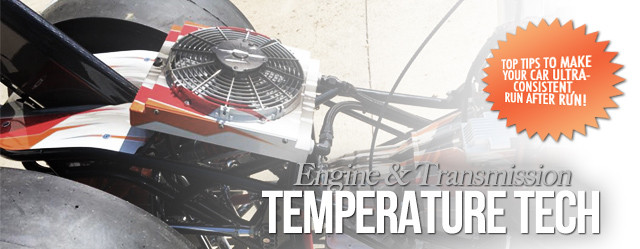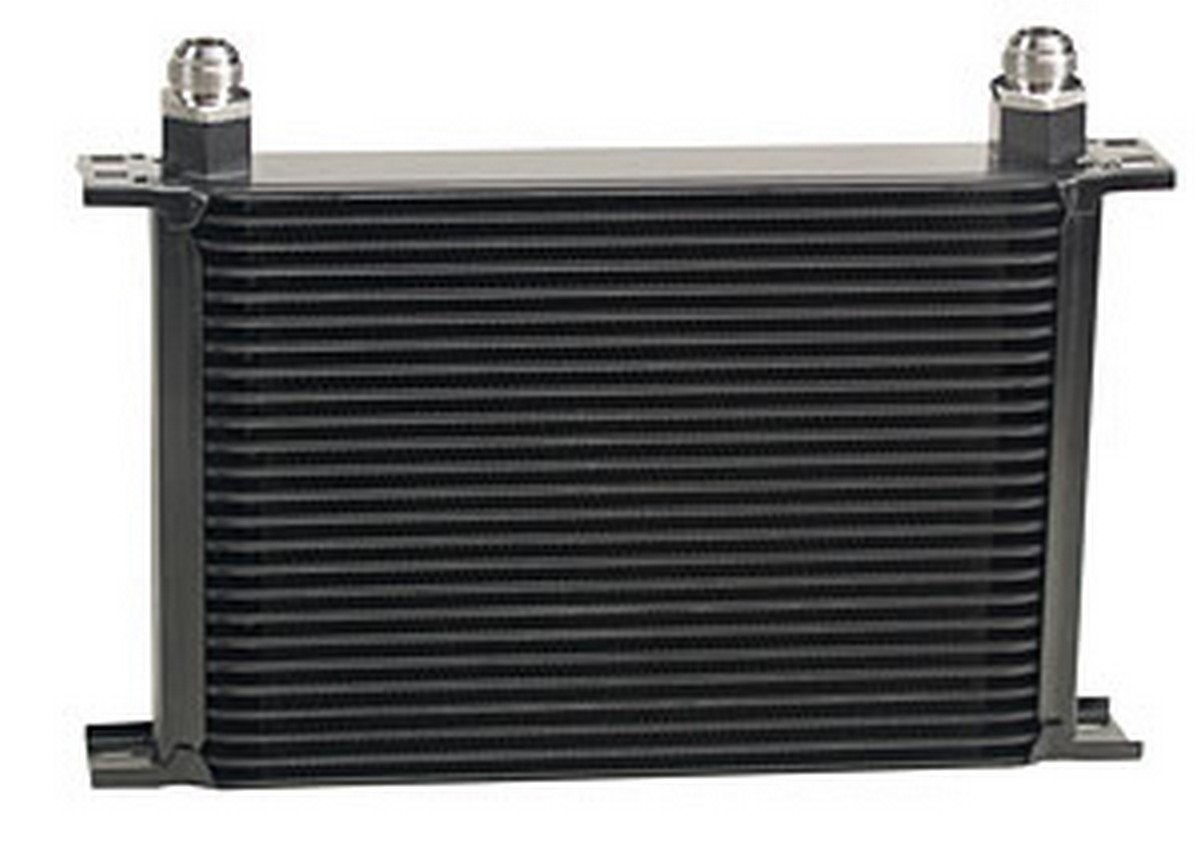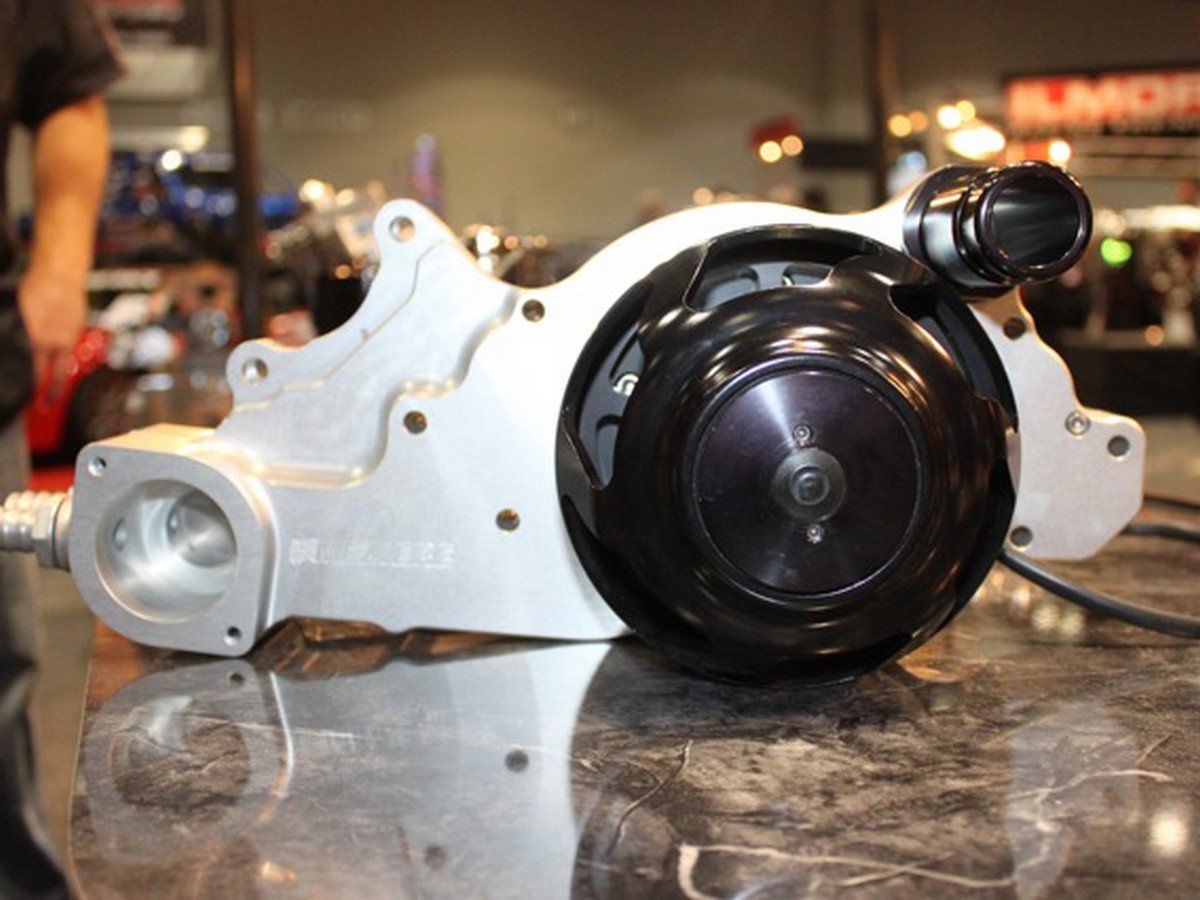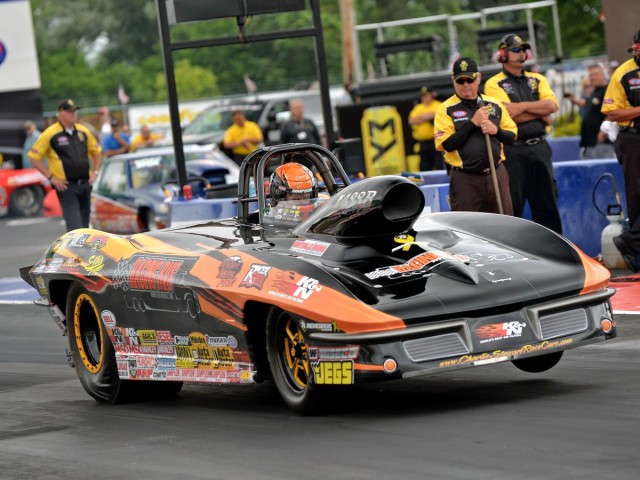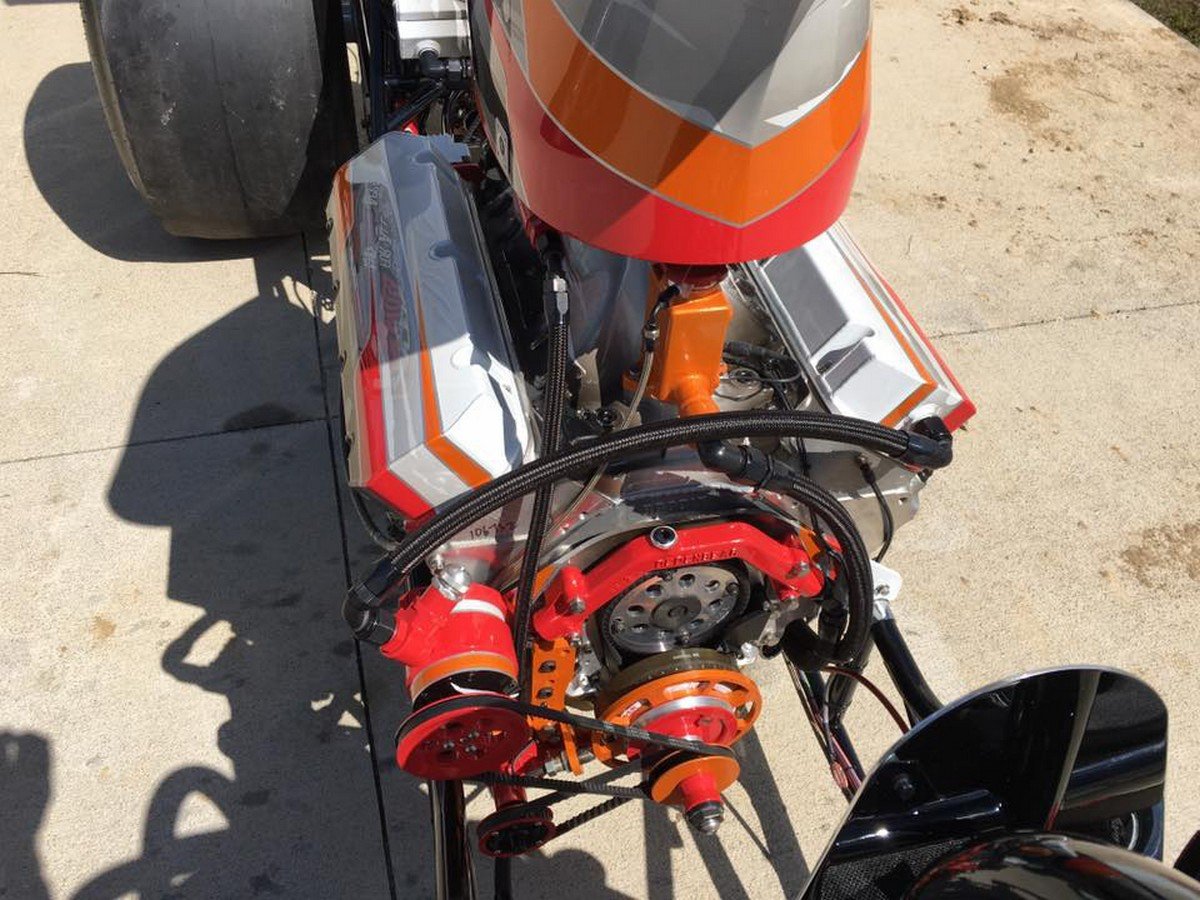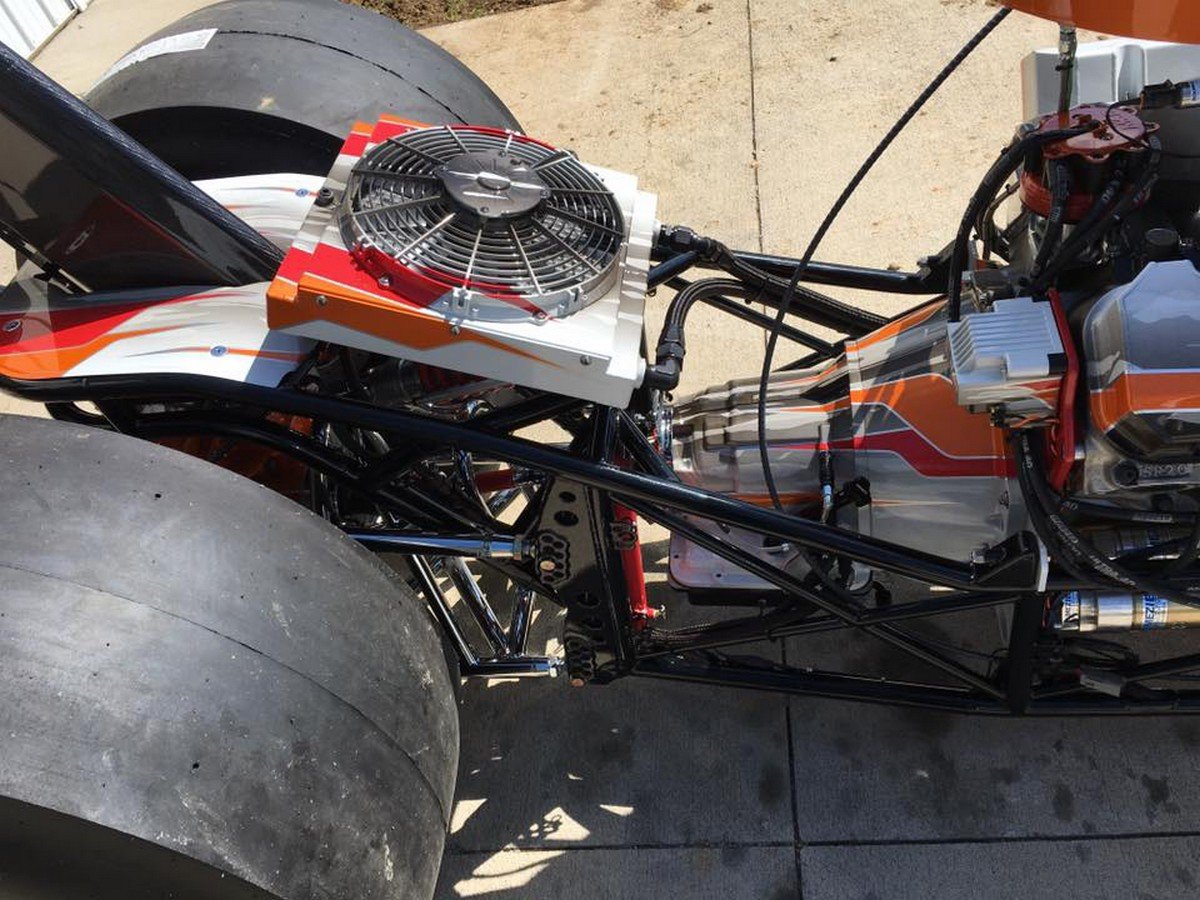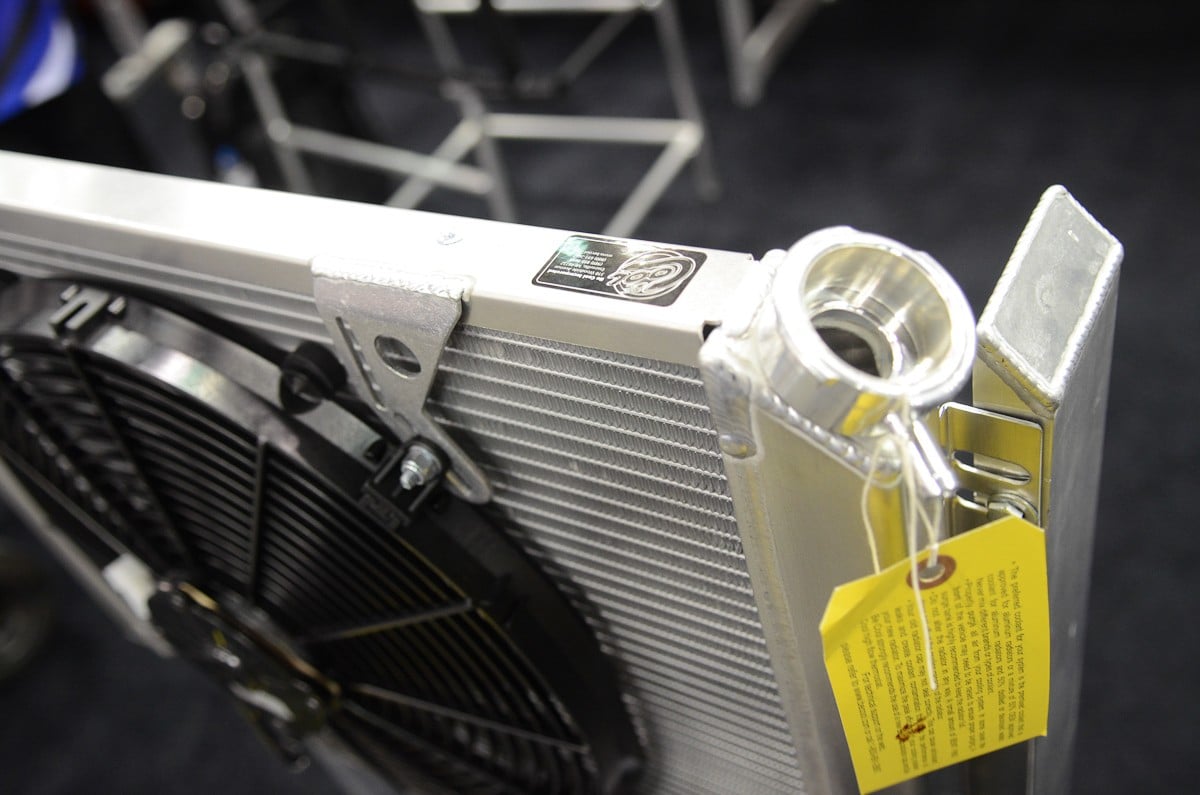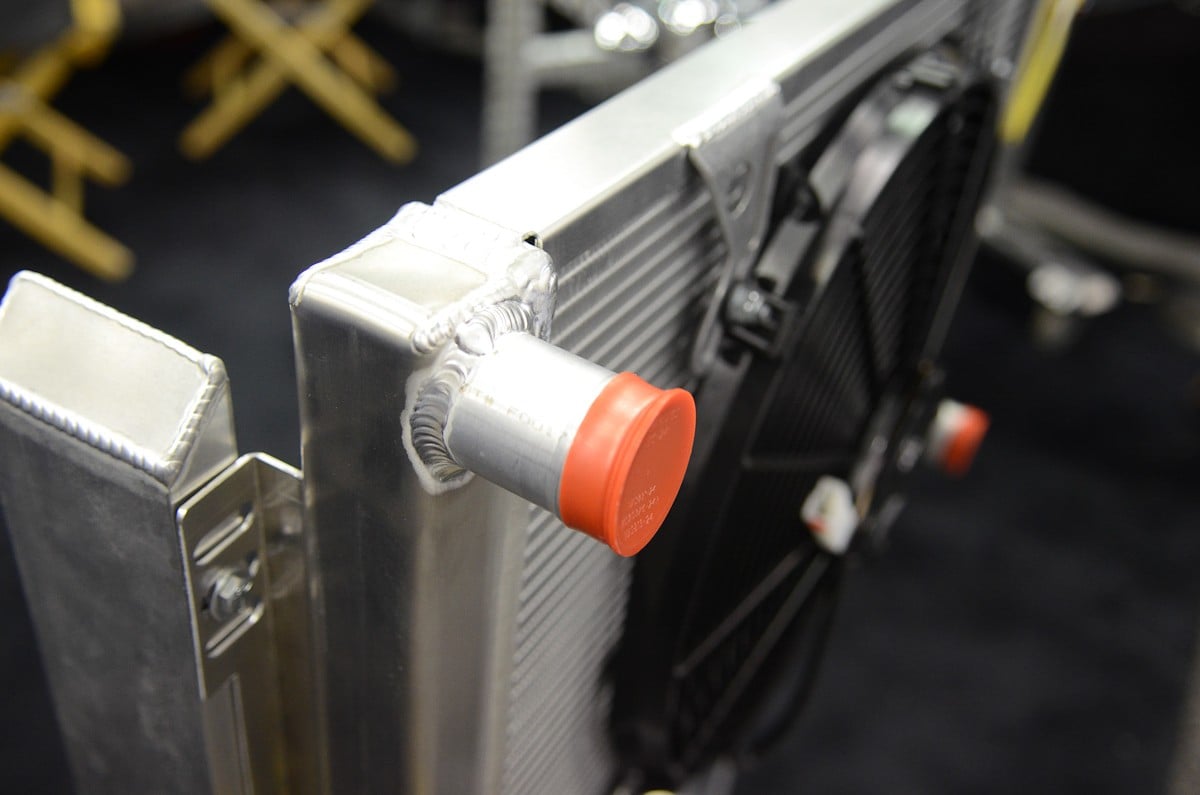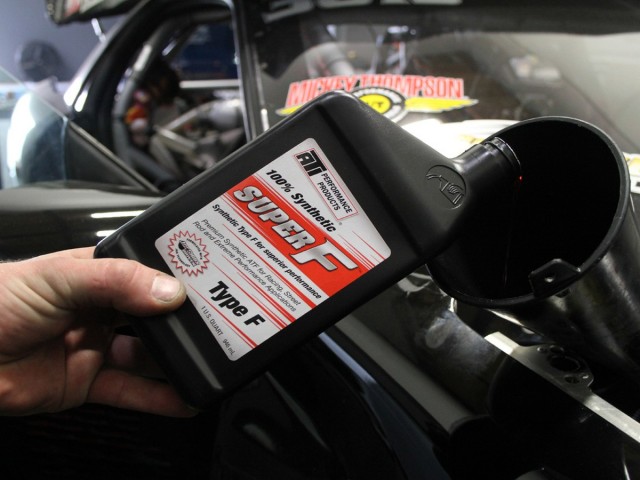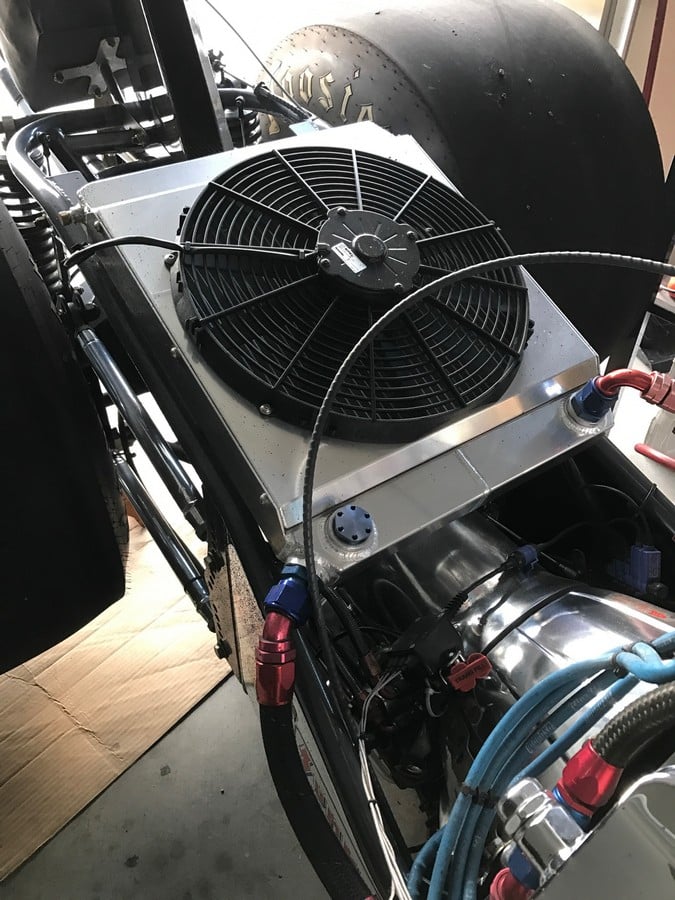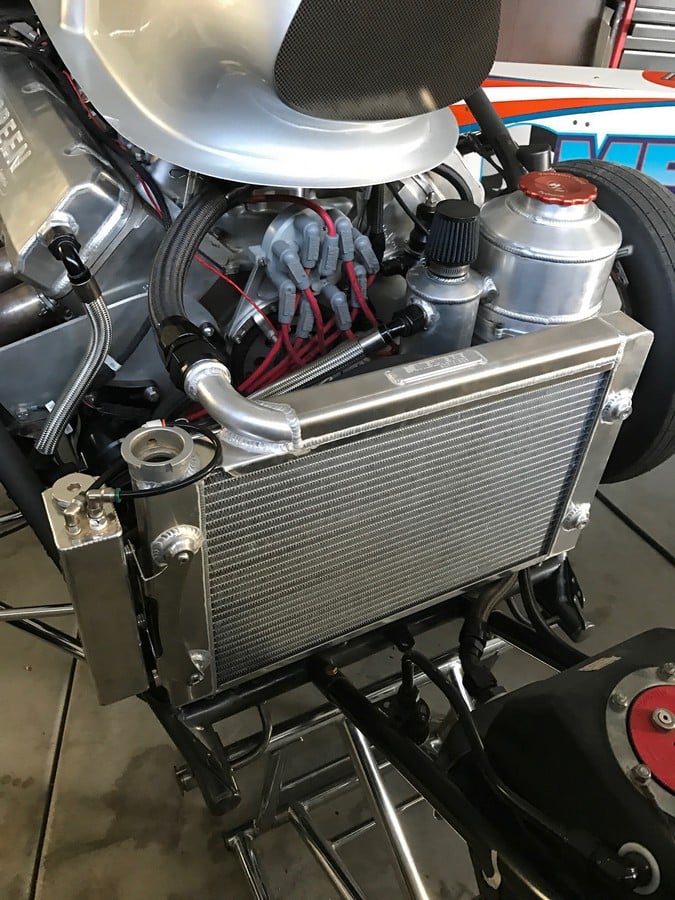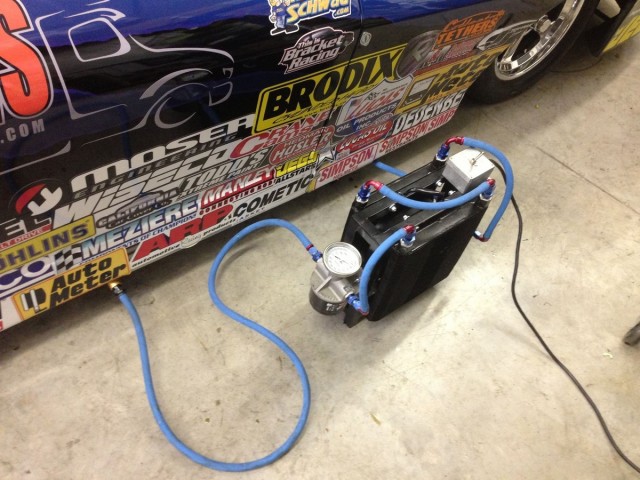Drag racing is a multidimensional form of motorsport that goes beyond just going fast. There’s a very precise and scientific factor that goes into it, and that’s the need to be consistent in what you do at the track every weekend. Racers are always looking for ways to repeat what they did, round after round, and one of the best ways to do that is to monitor the temperatures inside your engine and transmission.
A huge part of what makes drag racing such an attractive and affordable form of motorsport is bracket racing. Virtually anyone can take a car or truck of their choice and hit the local drag strip on a weekend to try their luck at this artful form of racing. One of the biggest keys to success in bracket racing is being consistent between every run, and two huge elements of the consistency equation in drag racing are engine and transmission temperatures.
Why It’s Important To Monitor Temperatures
Consistency is what gets you the win light in bracket racing, so having a specific temperature target each run is so important. If you’re just going up to the line without knowing your engine and transmission temperatures, it will make your performance harder to predict and repeat.
Using an aftermarket transmission cooler and water pump are a must if you want to go rounds at the track while being consistant.
Don Meziere, owner of Meziere Enterprises, not only manufactures many products that help keep engines and transmissions cool, but he’s a hardcore sportsman racer with years of experience behind the wheel. Don understands the need to keep things consistent in racing when you have to hit a specific number.
“Any variation in the vehicle or temperatures will have a drastic effect on the car’s performance, so it’s important to lock those down. For bracket racing, you have to monitor engine and transmission temperatures because viscosity can change clearances inside the engine and transmission. When each of those change, it will have an effect on performance, for sure,” Meziere says.
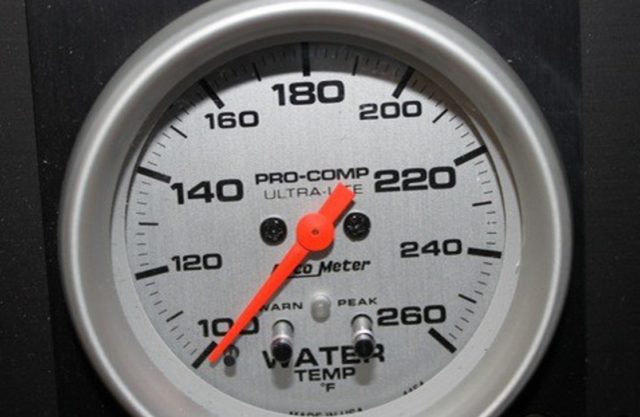
For years most racers had at least a water temperature gauge inside their racecar, and did everything they could to stabilize it from run to run.
Running Hot
Luke Bogacki has a different approach to how he deals with engine and transmission temperatures: he tries to add heat, and for a very good reason.
“Rather than deal with trying to predict what everything will do when it warms up, I tend to run everything pretty hot. I spend time in the staging lanes trying to build good heat in the engine and drivetrain just so when I pull into the water box at 150 degrees it will be like that the first round or the fifth round. That way I don’t have to try and change what I’m doing to keep the car cool, because I know what it will do at this temperature and replicating that is just easier than trying to keep it cold. It stabilizes things across the board and just takes that out as a variable.”
“Being able to monitor or stabilize engine and transmission temperatures goes beyond just the number itself. You might not be able to keep those temperatures stable at the level you want in certain situations where you can’t cool the car or transmission. So it’s very important to know what the car is going to do when those temperatures start to get that hot, and you can’t do that if you’re not monitoring them at all times,” Bogacki explains.
These theories on why you need to know what your engine and transmission temperatures are also work in heads-up racing situations, as well. Racers must be able to get their fluids warm enough to perform without putting performance-robbing heat in their engine or transmission. So when the goal is to be the first to the finish line in heads-up racing, you want to get the best performance out of the engine and transmission. This means having oil and transmission fluid that has been warmed to a desired temperature while not putting heat in the motor itself.
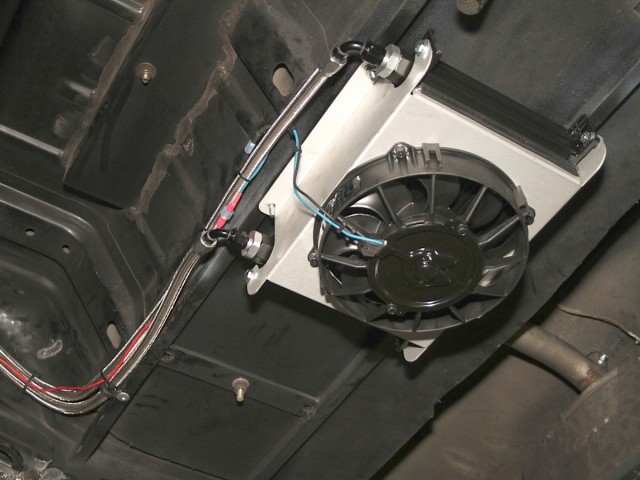
A remote-mounted transmission cooler is an option for some racers where space is tight under the hood.
Every aspect of the car has to be consistent to win and that includes the engine and transmission temperatures for sure. -Don Meziere
“When we’re heads-up racing our particular combination, we try to heat up the engine oil up as much as we can. That can be difficult with the Driven Oil 15 weight we use, and it’s hard to leave the pits above 150 degrees. We like to see the oil at least 100 degrees before we do anything. The transmission is the same way. I heat it up to about 150 degrees, as well. These are the ranges we know that the combination we run likes it the best, so we do what we can to get them there for maximum performance,” Beattie, Jr. explains.
How you monitor the temperatures is an important part of the process in keeping everything uniform. You need to use the correct gauges and sensors in the right places to watch what the temperatures are doing inside the car; the best drivers and teams are monitoring these items constantly. It’s best to fall into some type of routine where you’re looking at the temperatures on a regular basis, either in the pits when you arrive in the lanes or before you make a pass.
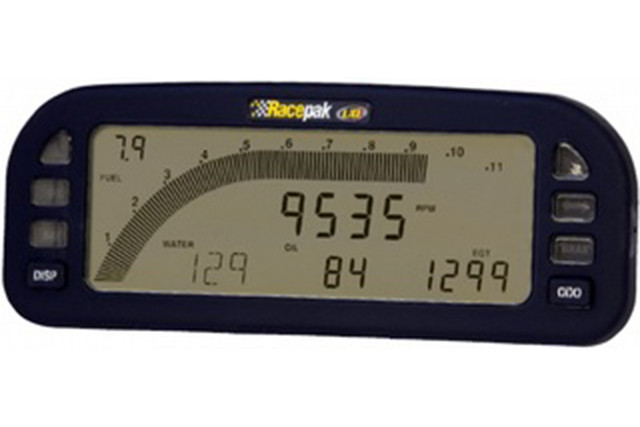
Using a Racepak style dash to monitor your temperatures before a pass is an excellent way to gain consistency.
“We have a routine where we heat things up based on when we have to run, and just watch everything via the laptop or the gauges. We look at them about every 10 minutes to make sure they are where they need to be. You get to know how long it will take after a few times based on the weather conditions, and so on,” Beattie, Jr. says.
Bogacki takes things a step further in his process on how he monitors the temperatures in the engine and transmission.
“Having a transmission temperature probe in the pan is good to just know how hot the fluid is running in the transmission. It’s a good spot to get a stable reading from round to round on what the transmission temperature is,” he states.
“The oil temperature gauge is becoming equally as important, so you can really be precise when trying to see what’s going on with the car to keep it consistent,” Bogacki continues. “I’m trying to do what I need to in order to monitor and stabilize the temperatures going into the water box based on what the gauges are telling me. After that, I’m not looking at them again until the run is over.”
Engine Temperature Overview
When you’re looking at what temperature to run your engine for a certain kind of racing, there is no “perfect” number. Elements like what kind of block, rods, oil, fuel, style of racing, and other things all play a part in deciding what temperature will keep the engine happy. Most engine builders will have specific recommendations for the mill they’ve built for you. “My engine builder doesn’t want my heads-up car started below 100 degrees. For my Stock class car, the steel block, aluminum heads and lots of OEM parts need to start the burnout at about 125 degrees based on that combination,” Beattie, Jr. says.
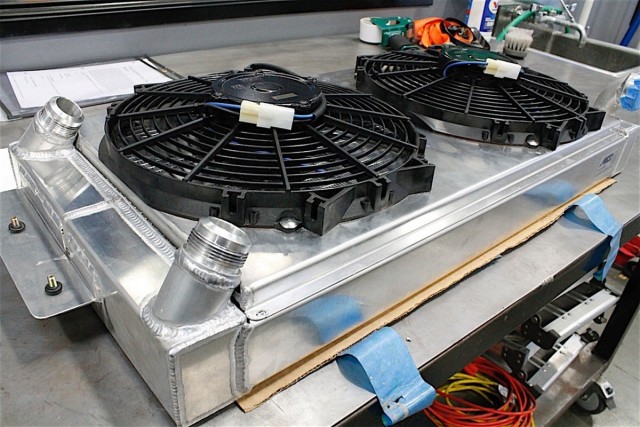
Having a radiator with adequate capacity and correctly mounted fans will help any bracket racer keep their temperatures in-check when going rounds.
The biggest variance of operating ranges happens in the world of bracket and index racing. There are so many different combinations in play that each one requires a different temperature to achieve the best and most consistent performances. The majority of top bracket racers are using alcohol as their fuel of choice, and that can change things even more.
“You get some different thought processes when it comes to what temperature to run a motor at, especially when it comes to alcohol motors. There are some people who like to run their stuff really hot, which is almost hard to do on that fuel,” Bogacki explains. “For me, my normal range on almost everything when it comes to water temperature is around 150 degrees; that’s where I want it at when I hit the water box. Even as I go down track, it doesn’t pick up a ton of heat, so I’m usually in the 150 to 190 degree range in both my gas and alcohol cars.”
Luke Bogacki uses a well designed cooling system on his dragster to help keep the temperatures where he needs them no matter the conditions.
Engine temperatures can play a crucial role in how consistent a car is. – Luke Bogacki
The engine temperatures will play a critical role in how consistent a car is for bracket racing. Water and oil temperatures should both be monitored because they can effect what will happen to a car’s elapsed time.
“The more heat that goes into the engine will really start to pull power out of it. When it comes to what it will do to your elapsed time, you can very easily lose five hundredths to a full tenth off your times when it starts to get too hot,” Meziere says.
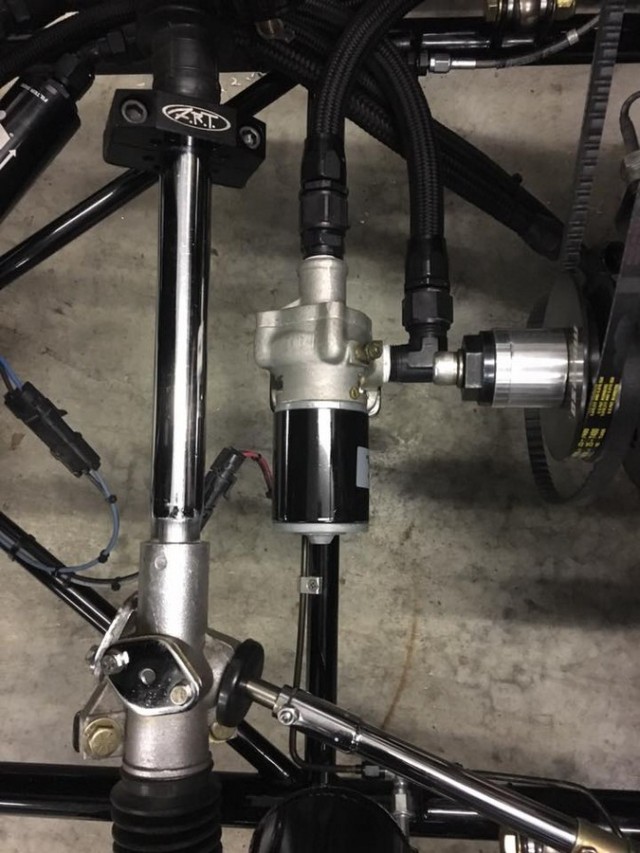
A remote water pump like this one from Dedenbear that Bogacki uses on his Corvette is another way to help keep a car cool when space is at a premium.
Engine oil temperature needs to be steady for bracket racing and in index racing, too. In the past, many didn’t take oil temperature into account for being a factor in how consistent a car ran, but that mindset has changed as bracket racers work on finding more ways to be dead-on with their dial-in as frequently as possible.
“The oil temperature thing came to light for me with one of my bracket cars that has a lower-powered 350 cubic-inch motor. The first run of the day was always a throw-away run in that car; it would run two-hundredths quicker after the first pass of the day — always. Eventually, after some research, I found that the oil I was running was breaking down due to the heat and causing the car to pick up elapsed time. I changed oil weights and it caused the car to become more consistent, since it wasn’t breaking down after getting the heat in it after the first run,” Bogacki explains.
Keeping the engine in a desired temperature range can be a simple task, but difficult to accomplish at the same time. In bracket racing, there are many instances where you’re making runs in a short amount of time, so cooling the car can become difficult to maintain the consistent performances you want.
More efficient radiators like these with higher capacities are a great way to help control the temperature of your engine.
“For sure, an effective cooling system is a must for bracket racers. We recommend to run a generously-sized radiator because it will not only cool better, but it will add capacity to the system. A good-flowing water pump along with a fan and shroud that’s sealed to the core of the radiator helps a lot,” Meziere says.
Transmission Temperature Overview
Most racers understand that getting your transmission too hot is a bad thing from a longevity standpoint, but they might not know that it also affects the consistency of the car. It’s critical for racers to pay close attention to these temperatures and log them in a bracket racing setting.
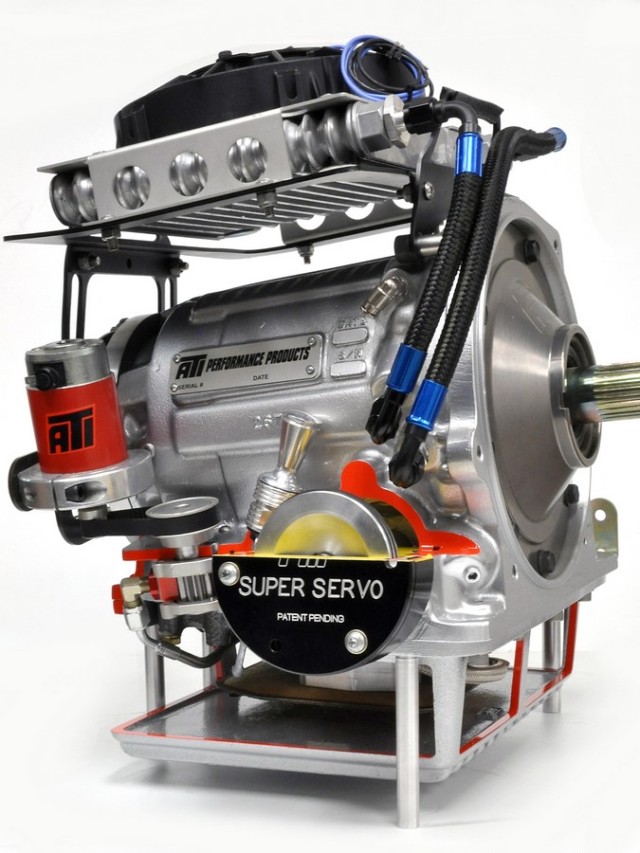
The ATI SCS-30 keeps transmission fluid cool by moving the fluid through the cooler even when the car is off. This can make it easier for a racer to keep consistent transmission temperatures.
You want to have the transmission at a certain temperature so the parts have their clearances where they need to be and have some heat in it. That way it performs correclty and lubricates the moving parts. -JC Beatie
Meziere goes into a bit more detail on how the temperatures in the transmission can make a difference.
“As the fluid gets hotter, the viscosity of the fluid will change. When the fluid gets thinner, it will affect how the torque converter works, because the converter is a fluid coupler. Then, as the fluid gets thinner, it doesn’t work as well and builds more heat. As the transmission gets hotter, the clutches start to not work properly. Putting too much heat in the clutches will burn them up, and then they won’t work properly.”
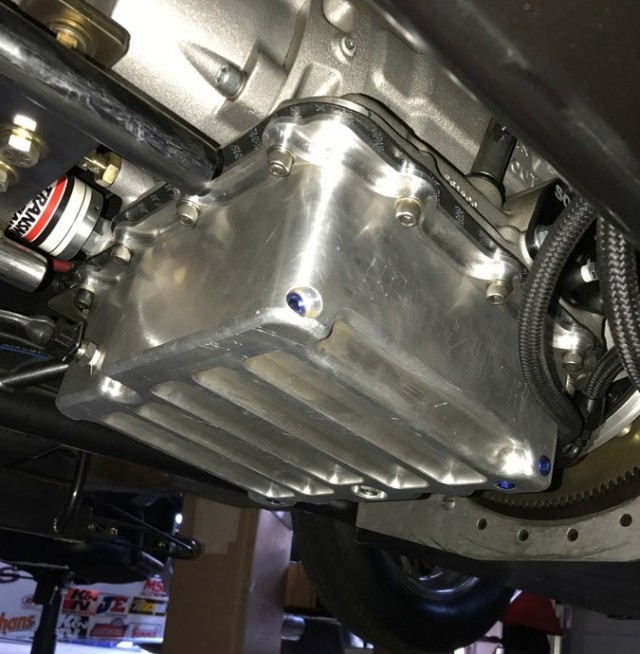
Don Meziere uses one of his transmission pans that has a heat exchanger built into cool transmission fluid. This uses the cooling system of the car to lower fluid temperatures in the pan.
So, as the transmission and its fluid get hotter, it will change how the converter acts. That kind of change will have a dramatic effect on the elapsed time of the car, more than anything. As the converter stall is manipulated, it will change where the converter interacts with the motor in its powerband and can rob a significant amount of power. That will cause a blown dial-in and short day at the track nearly every time.
For heads-up racers, keeping a consistent transmission temperature is more about controlling the variables that will change how the torque converter acts. Their combinations are very dialed into how and when the converter flashes, so if there are any changes, it will wreak havoc on their power management.
“You want to have them at a certain temperature, so everything has their clearances where they need to be and have some heat in it. That way, it needs to get where it needs to go and lubricates the moving parts,” Beattie, Jr. explains of heads-up transmission temperatures.
One way to combat the possible temperature issues and keep them consistent is to change what kind of fluid you’re using. Making a change to synthetic fluid made a noticeable change for Beattie, Jr. in his Stock Eliminator car with how consistent it was from pass to pass.
“The second pass of the day would usually be about two hundredths quicker than the first even if nothing else really changed. Once we went to all synthetics, then started to do the same warm-up procedure, it would only be about a hundredth quicker on the second pass.”
Tips For Keeping Things Cool And Consistent
With the importance of having the engine and transmission temperatures be as steady as possible between runs for consistency, it’s imperative for racers to be prepared. There are many different ways to stabilize or lower the temperature of your engine and transmission. The way you do it can depend on the situation you’re in.
Meziere uses very heavy duty cooling systems in both his dragster and door car to make sure he never has engine tempratures that get too high, and are consistent.
The best way to keep an engine cool and within the desired operating temperature, according to Meziere, is to start with a good system and maintain it. “A well-designed cooling system is often the best way to go, and is actually overlooked by a lot of racers. The system should be maintenance-free and will make the biggest impact on keeping the car cool and consistent, temperature-wise. Just make sure it’s topped off and it will be good to go throughout the entire weekend.”
There are times when you need some extra help getting the car to cool down, and there are solutions to help with that.
“I’ve got a chiller that circulates cold water through the system to help,” Beattie, Jr. says. “I see a lot of racers using bags of ice to help get the temperature down. Others will add cold water to the radiator, as well, to help cool the car in a round-robin deal. You have to be careful because you don’t want to dump all the hot water out and add cold water because that will cause damage. You have to do a balancing act to get the car to a manageable temperature for the next round.
When it comes to keeping a transmission cool, there are both internal and external options at your disposal. Adding extra transmission coolers inside the car can increase the capacity of the fluid and will make it take longer to get hot. According to Bogacki, you can add other things to the extra coolers to help bring temperatures down quicker.
“I use an external transmission pump that will circulate fluid through the transmission, converter, and the three coolers. It keeps it from retaining heat between runs. I will also use a larger external cooler if there’s time between rounds and I need to get the temperature dropped.”
The science of consistency in drag racing has become something that even the folks at NASA can appreciate. Racers go to great lengths to monitor every aspect of their car to get the most repeatable results as possible. By utilizing the right cooling system components and making sure they’re keeping close tabs on their engine and transmission temperatures, it will provide them with just one more tool to hit their dial-in and turn on win lights each week at the track.



